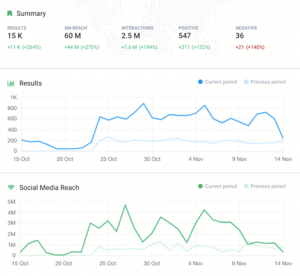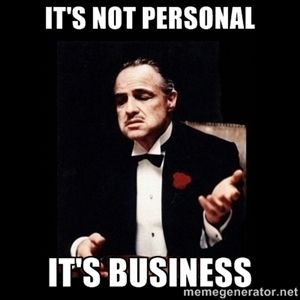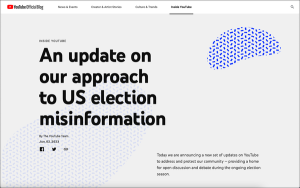August 19, 2016

Over the last few years, we’ve all heard the advice to avoid too much text in banner ads. “You need images,” the experts say. “Customers are drawn to images.”
There is certainly evidence that today’s consumers are drawn to images; the success of services like Instagram and Pinterest are a testament to that. However, while discussions of banner ads often tend to focus on the idea of banner blindness and the fact that click-through rates have declined significantly since the earliest banner ads back in the 1990s, these conversations often ignore the fact that banner ads do still work — and it’s only in part because of images.
The fact is, text still sells. Even as marketers shout from the rooftops about their incredible success with ads that use hardly any text at all, effective banner ads still rely heavily on text. According to one recent study, banner ads that include text actually outperform ads that only include animated images or colors.
Companies that fail to include adequate information about their products or services in their ads — even just a basic description of what they have to offer and why customers should respond — have much lower click-through rates than those that carefully craft text for their ads.
So what does this mean for your banner ads? If they aren’t performing as well as you would like, you could have a text, not an image, problem. The good news is that you can fix the problems and improve results.
Banner Ads Basics
Whether you are starting fresh with a new banner ad campaign, or you need to make changes to an existing campaign, there are several “rules” to keep in mind as you develop your ads.
1. Your ad needs to include three basic elements: A value proposition, a call to action, and a brand identity. Now, there is some question as to whether you actually need a CTA; some argue that there’s no need to tell users to “click here” or “click now” because most people know by now to do that.
However, while you may not use that exact terminology, a CTA is still important. Using language like “please help” when raising money for a charity, or “get it now” when selling a product still serves as a call to action without turning into Captain Obvious.
2. Include plenty of information, but don’t overwhelm. Remember the value proposition? That needs to be at the forefront of your mind as you develop your banner ad copy. Give people a reason to click, but don’t go overboard with text.
3. Think “flow.” When someone clicks on your banner ad, where does it take them? Is the branding and message consistent throughout? Something as simple as using a different color scheme on the landing page can confuse users and drive them away. Your banner ads need to be consistent with the rest of your messages and your brand identity.
Copywriting 101
Now, you might be thinking, “These are great in theory, but how do I actually design my ads to get attention?” When developing your ads in a banner maker or Photoshop, there are a few key principles to keep in mind that can increase the power of your ads.

Choose simple, powerful words. Remember, your audience is being bombarded with messages all the time. Stick to words that convey your value proposition without being wordy. What does the customer get from working with you? Can you distil that concept down into a few keywords? You don’t need to reveal everything in the ad — you are only trying to get people to click on the ad and learn more.
Avoid adding prices. Studies show that adding prices to your banner text destroys click-through rates. Offering a discount (without mentioning the actual price) is moderately useful while offering freebies tends to work well. Again, the focus should be on a compelling offer, not the cost.
Choose clean, easy-to-read fonts. It’s surprising how many companies choose fonts that might look pretty but are hard to read. Use clean, simple fonts; consider combining two different fonts to increase the impact of important words and phrases, but don’t go overboard.
Use color. Color is a key part of any successful banner ad campaign, and it is worth your time to do some research on color theory and psychological responses to color. No matter what colors you select, though, use them in a way that draws attention to the most important information in the ad. Take a step back and view your ad from a distance. If you can spot the most important information right away, then you’re on the right track.
Use white space. You do not have to fill every square pixel of space on your ad with an image or text. Don’t be afraid of white space. Give the eye a place to rest; in a sea of cluttered ads, yours will stand out for looking clean and simple.
Drawing attention to your banner ads is often a process of trial and error. However, when you focus on text — both the words and the design, you’ll see more click-throughs and more successful campaigns.
Digital & Social Articles on Business 2 Community(48)









